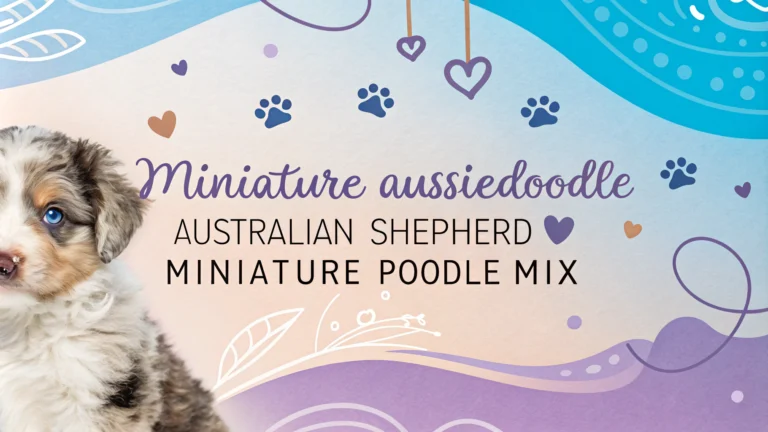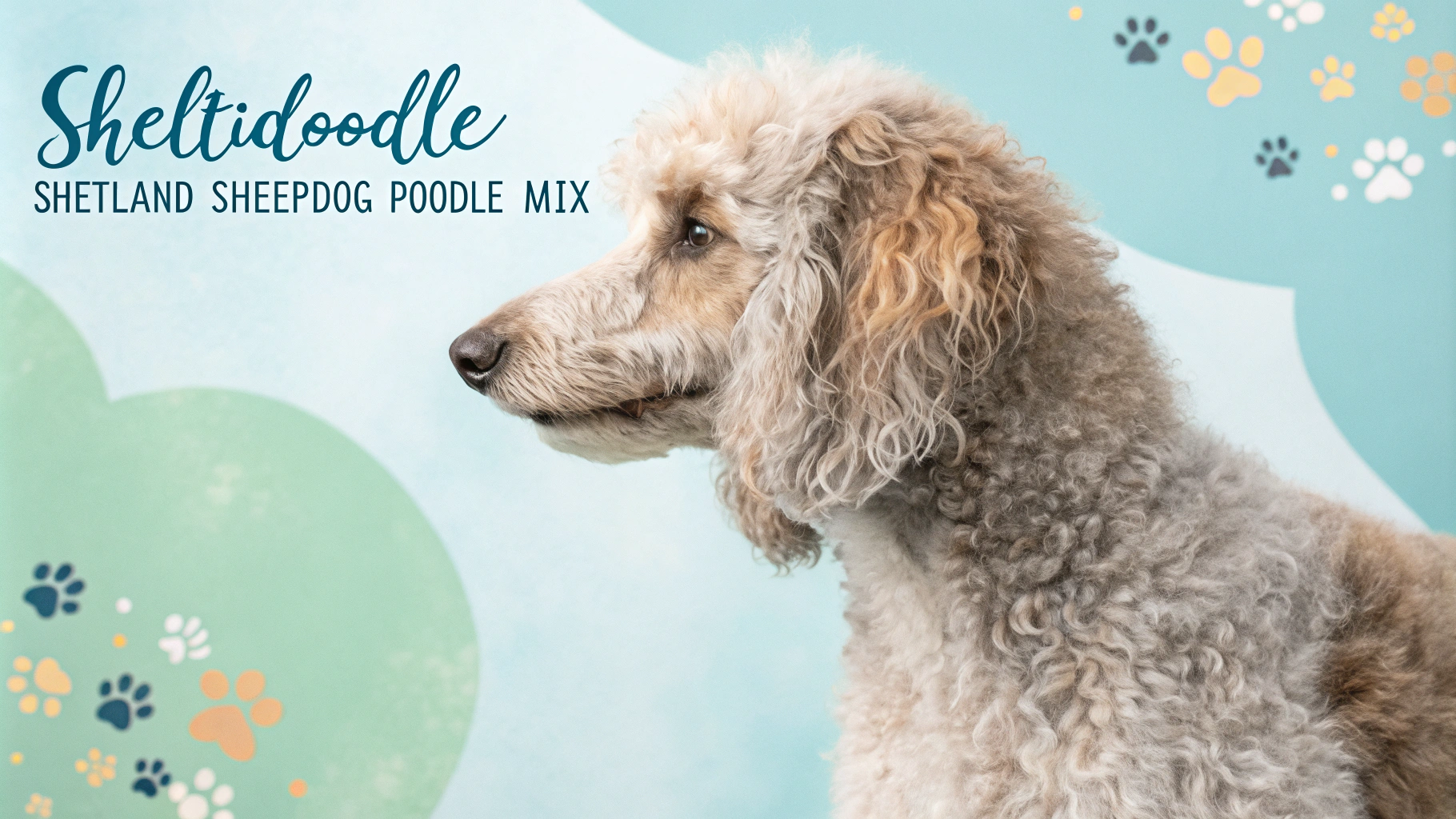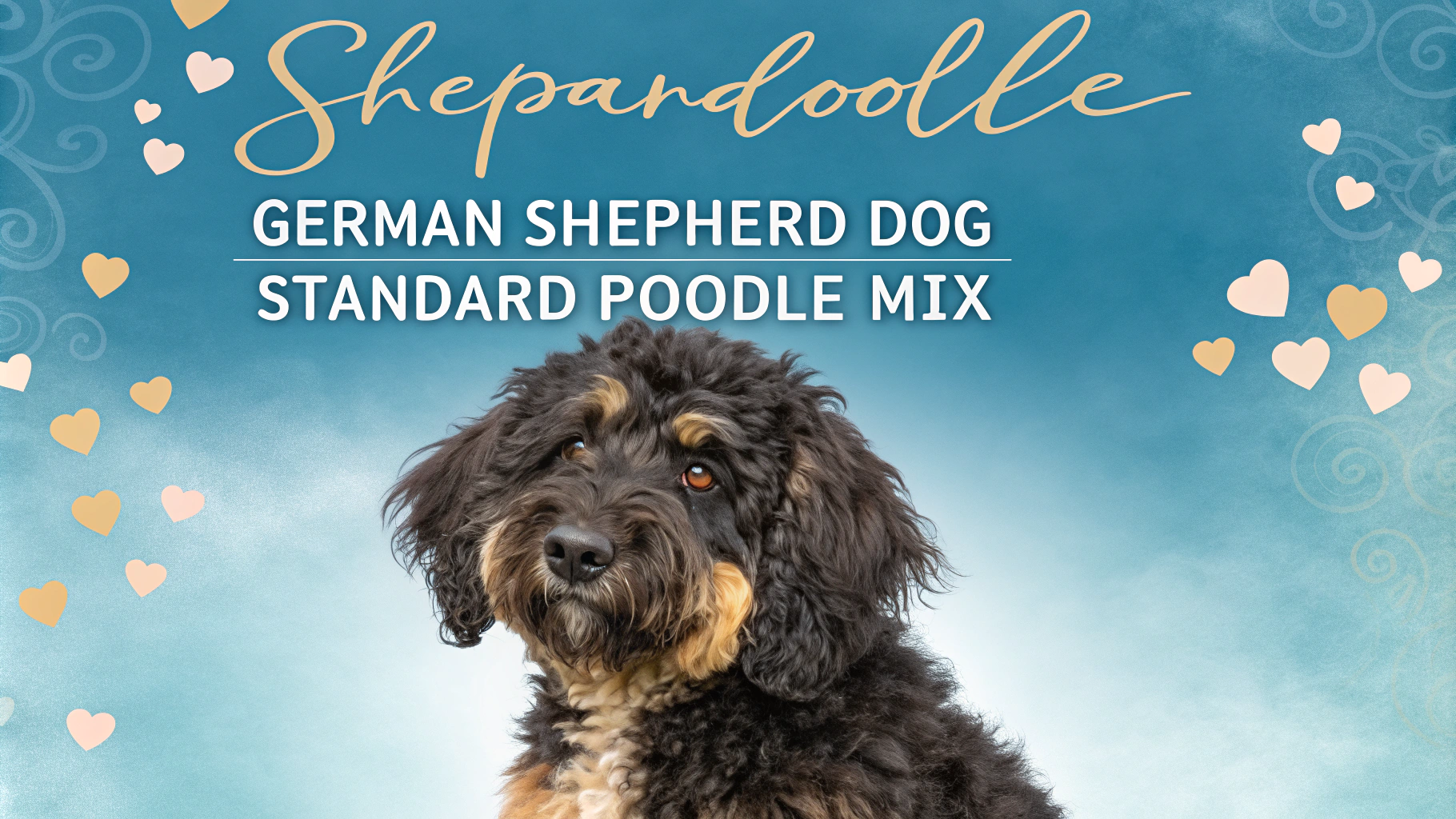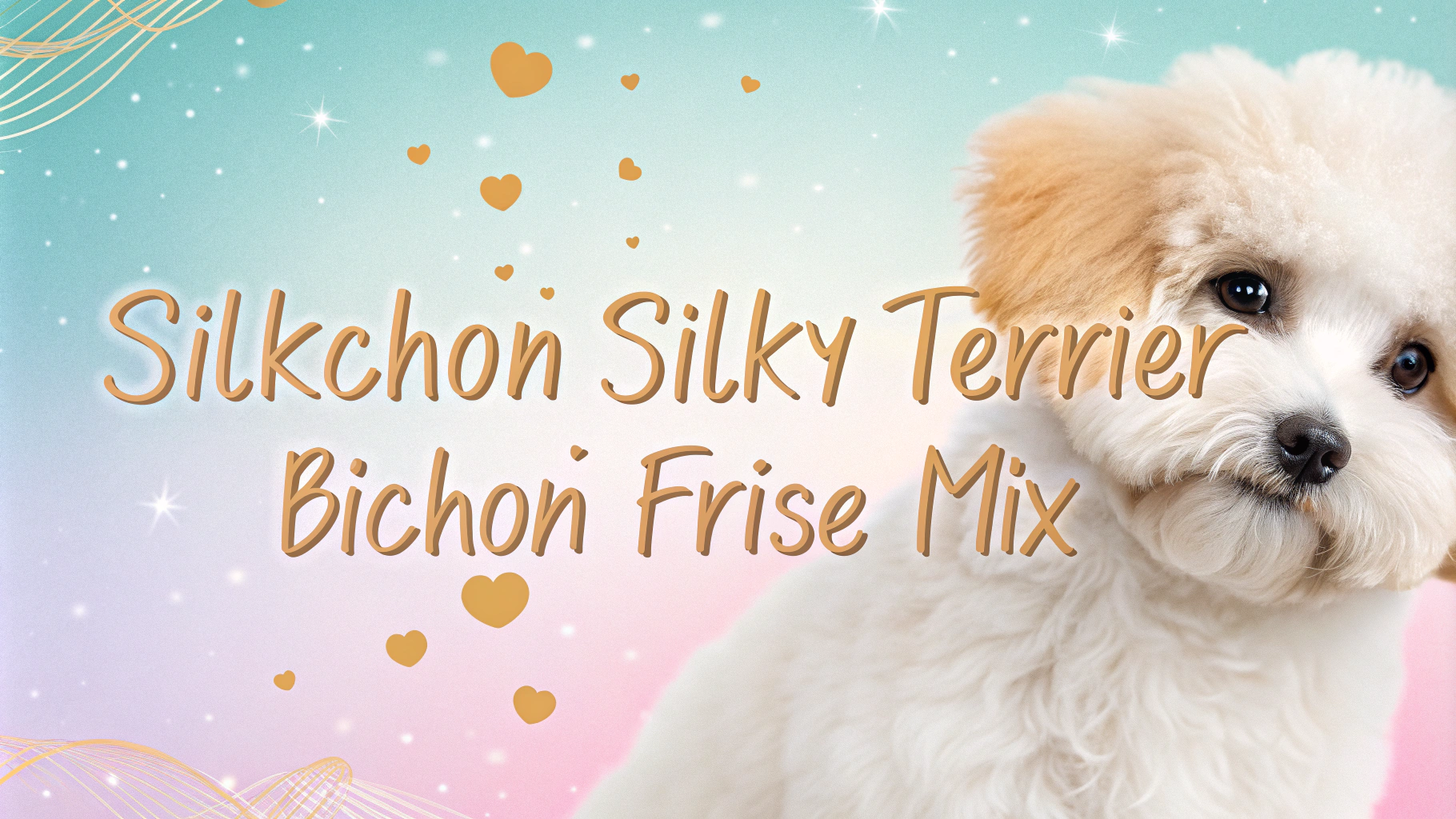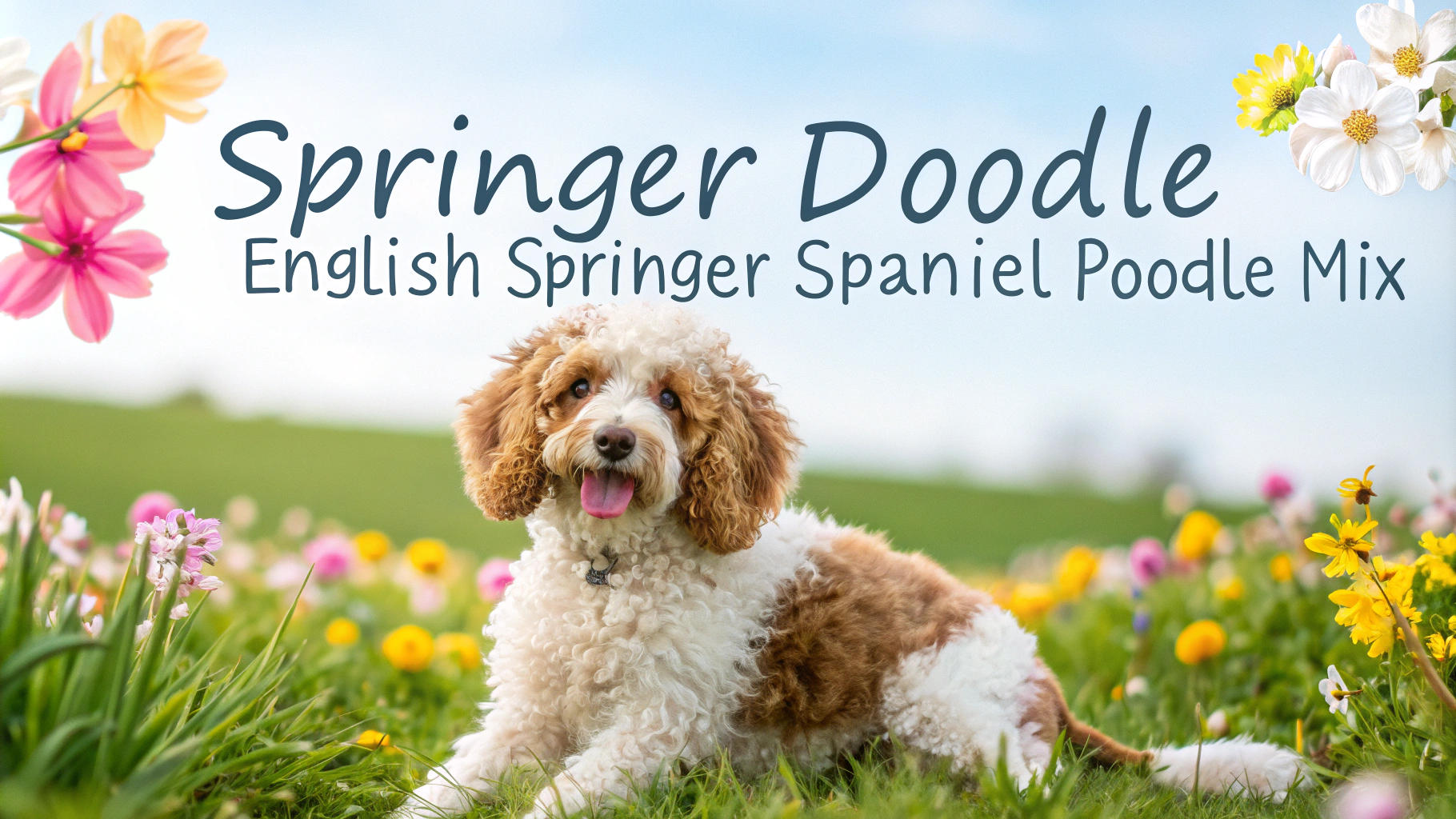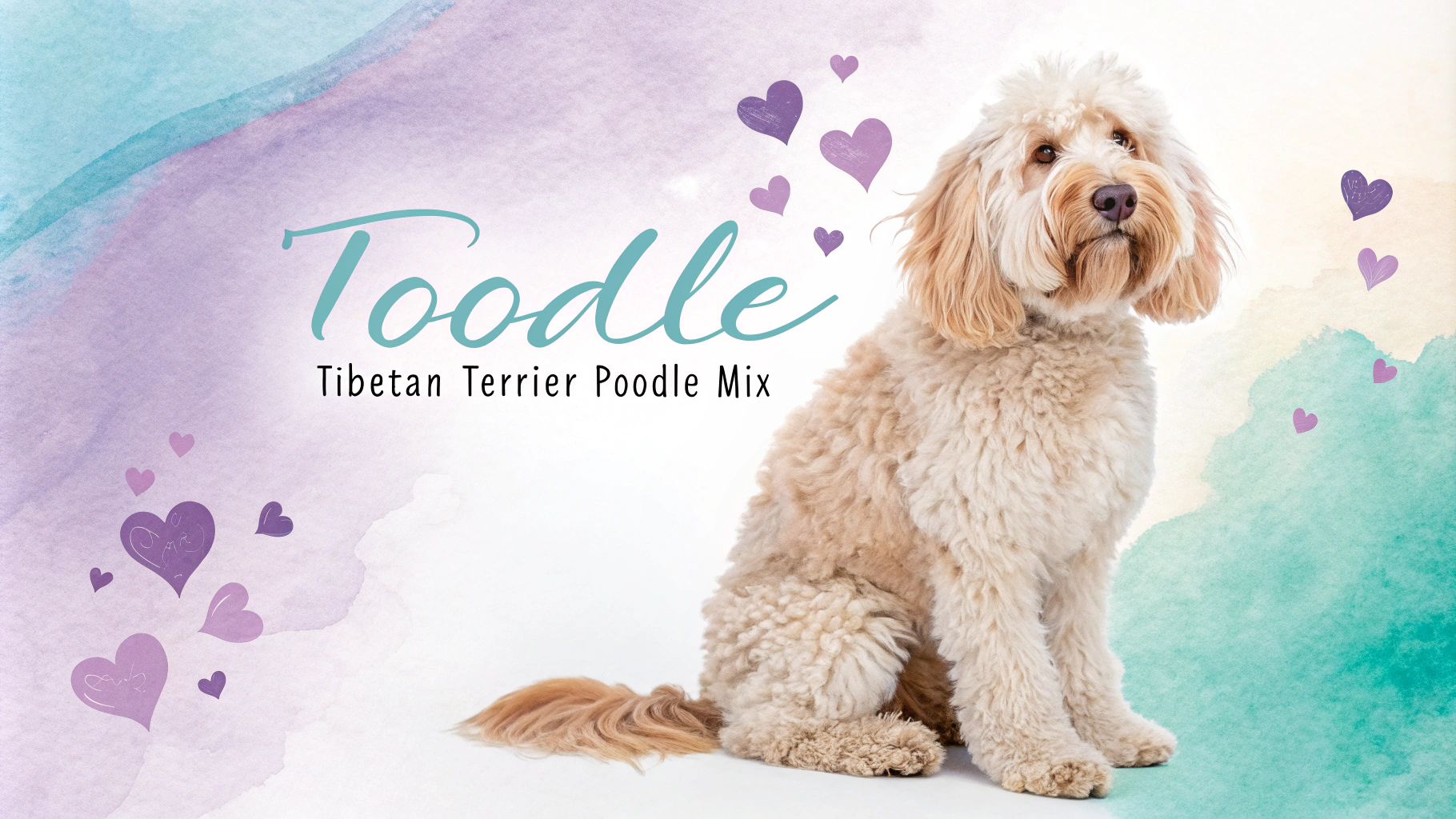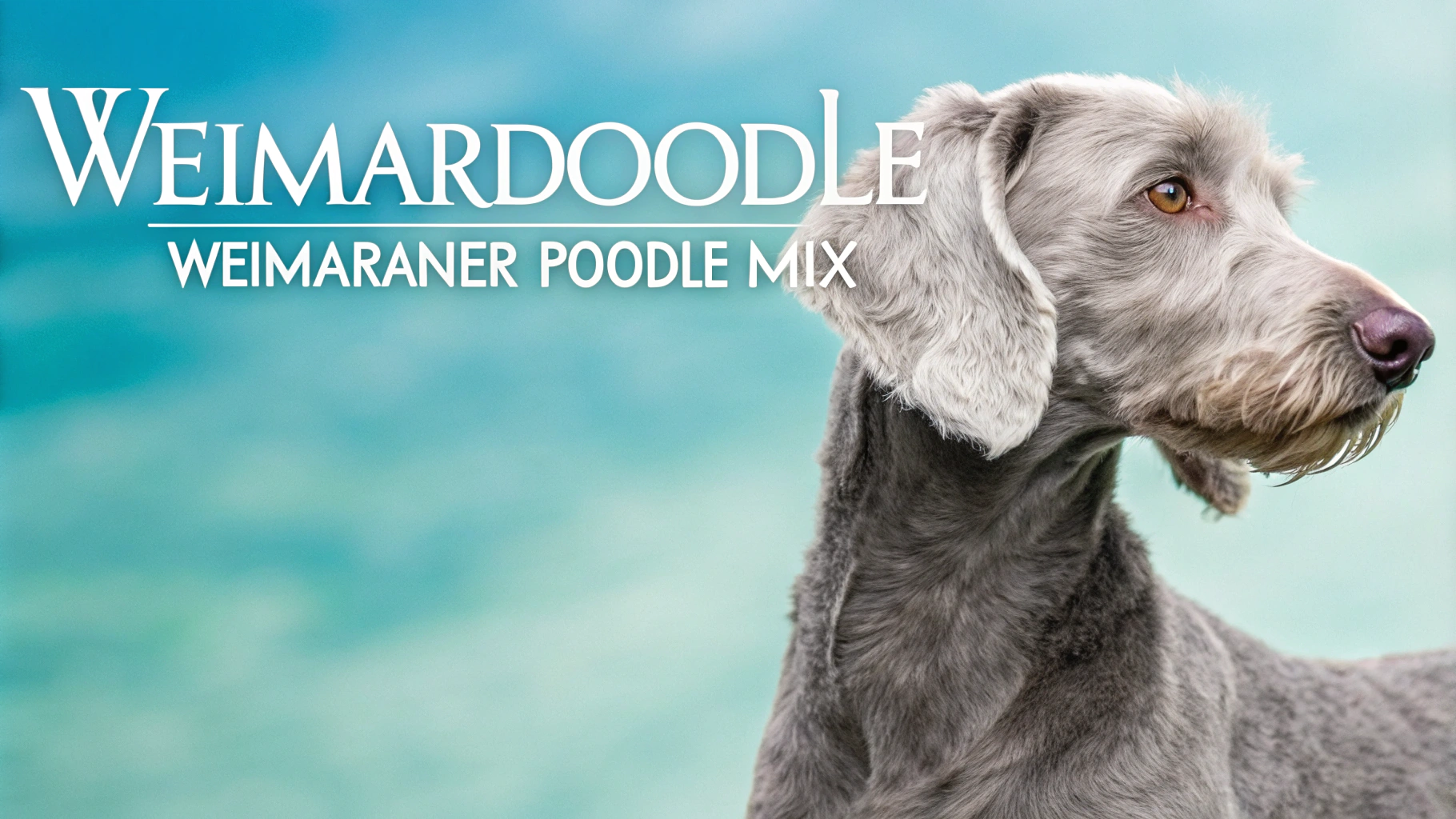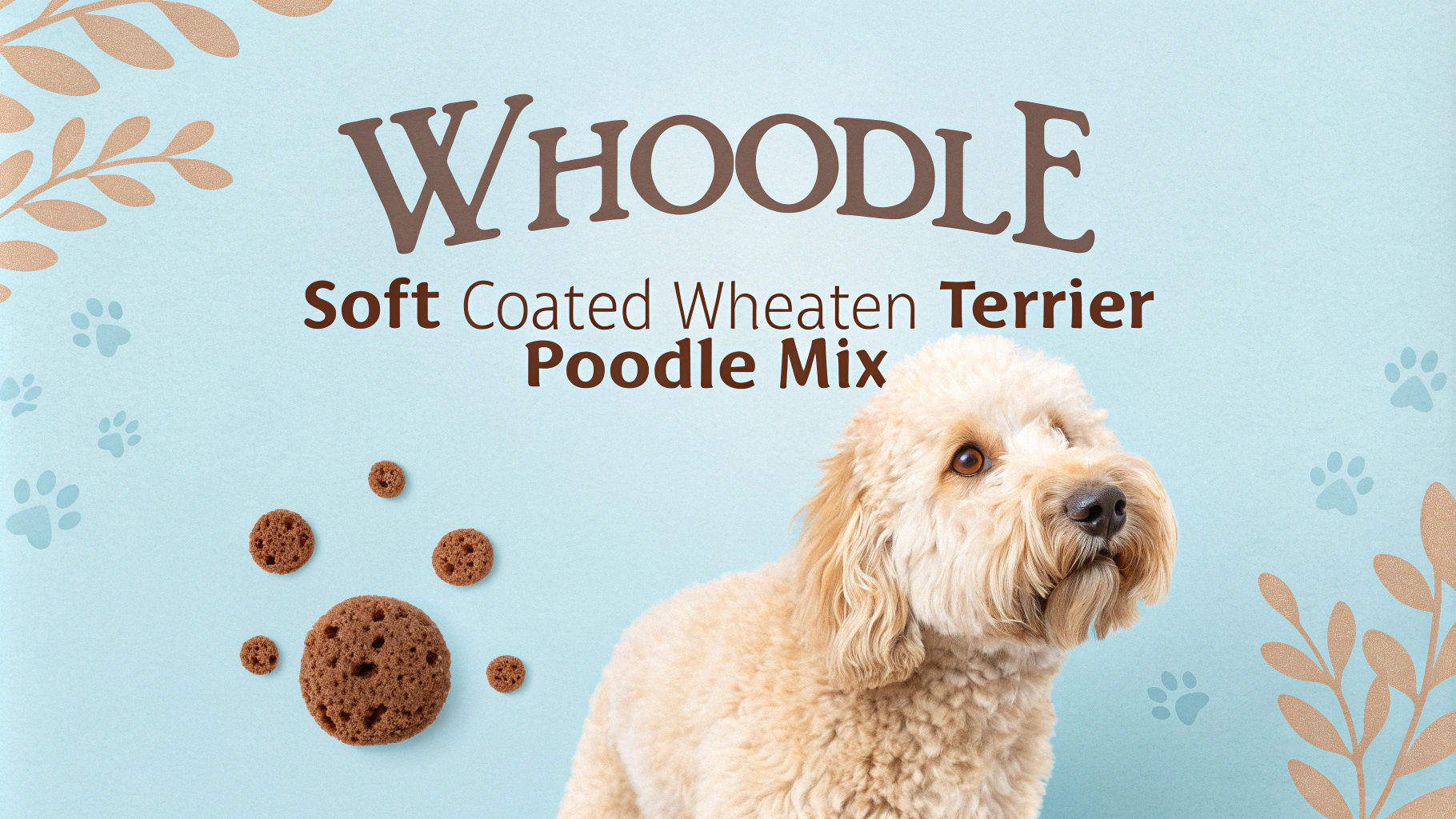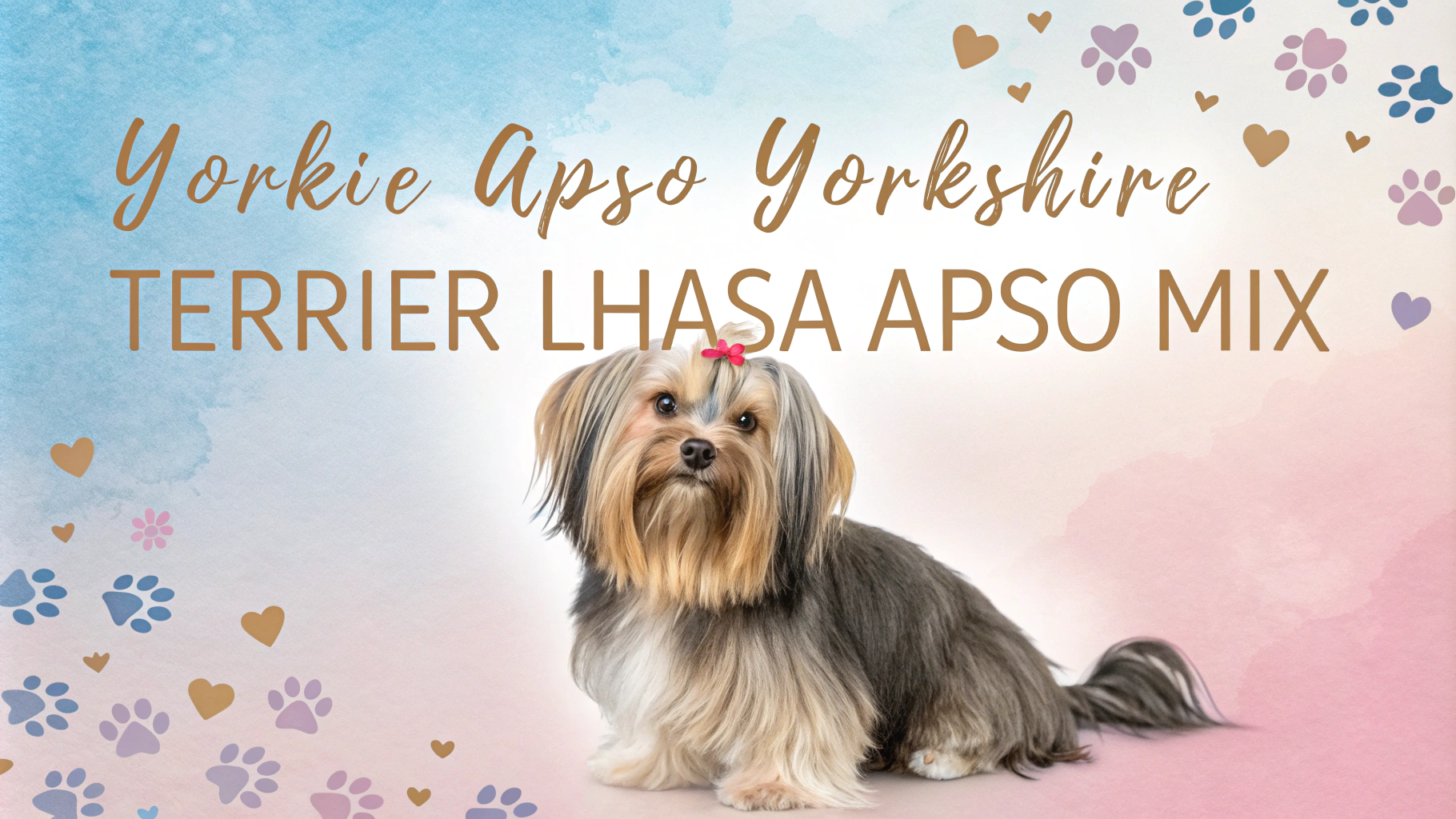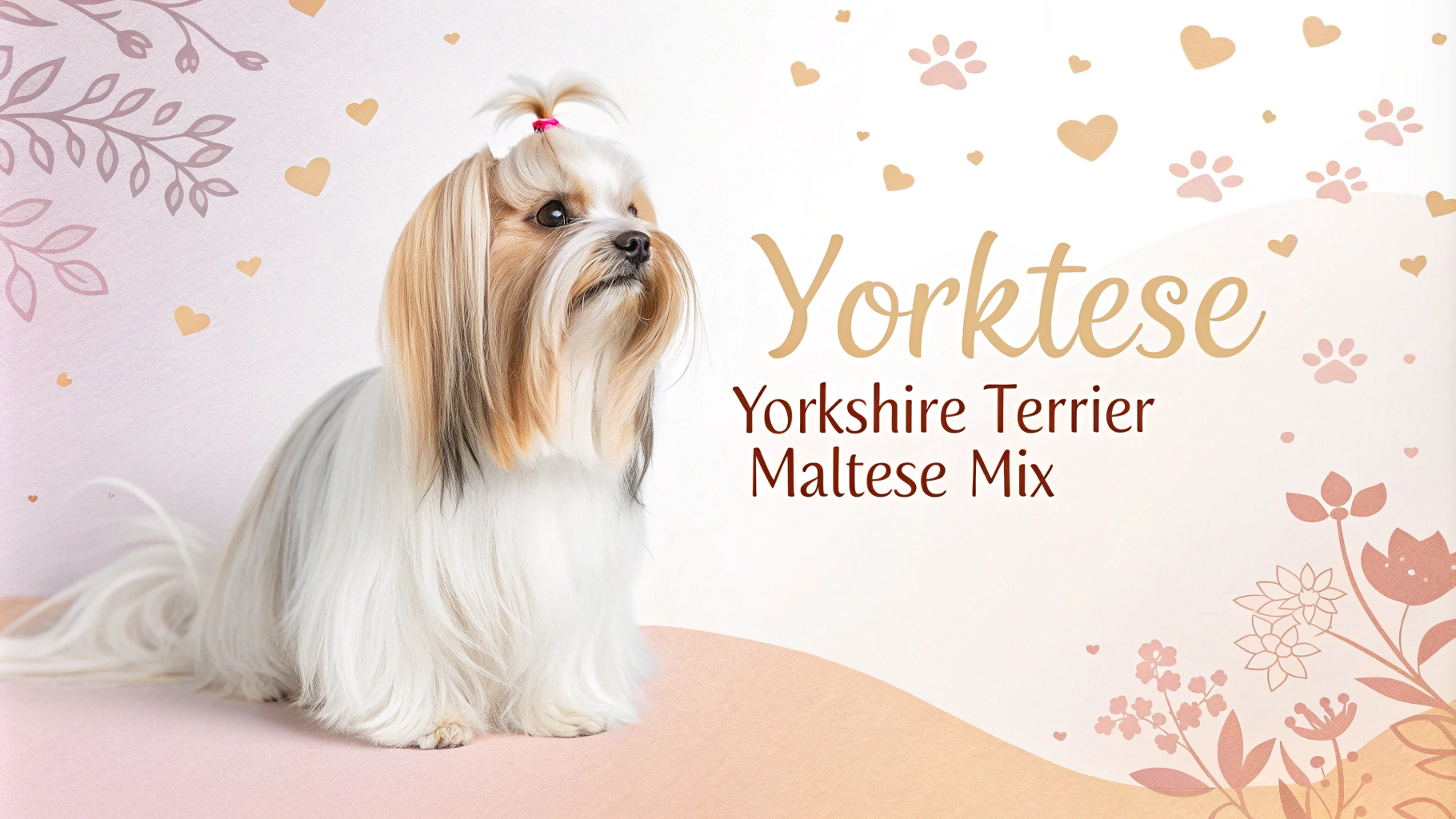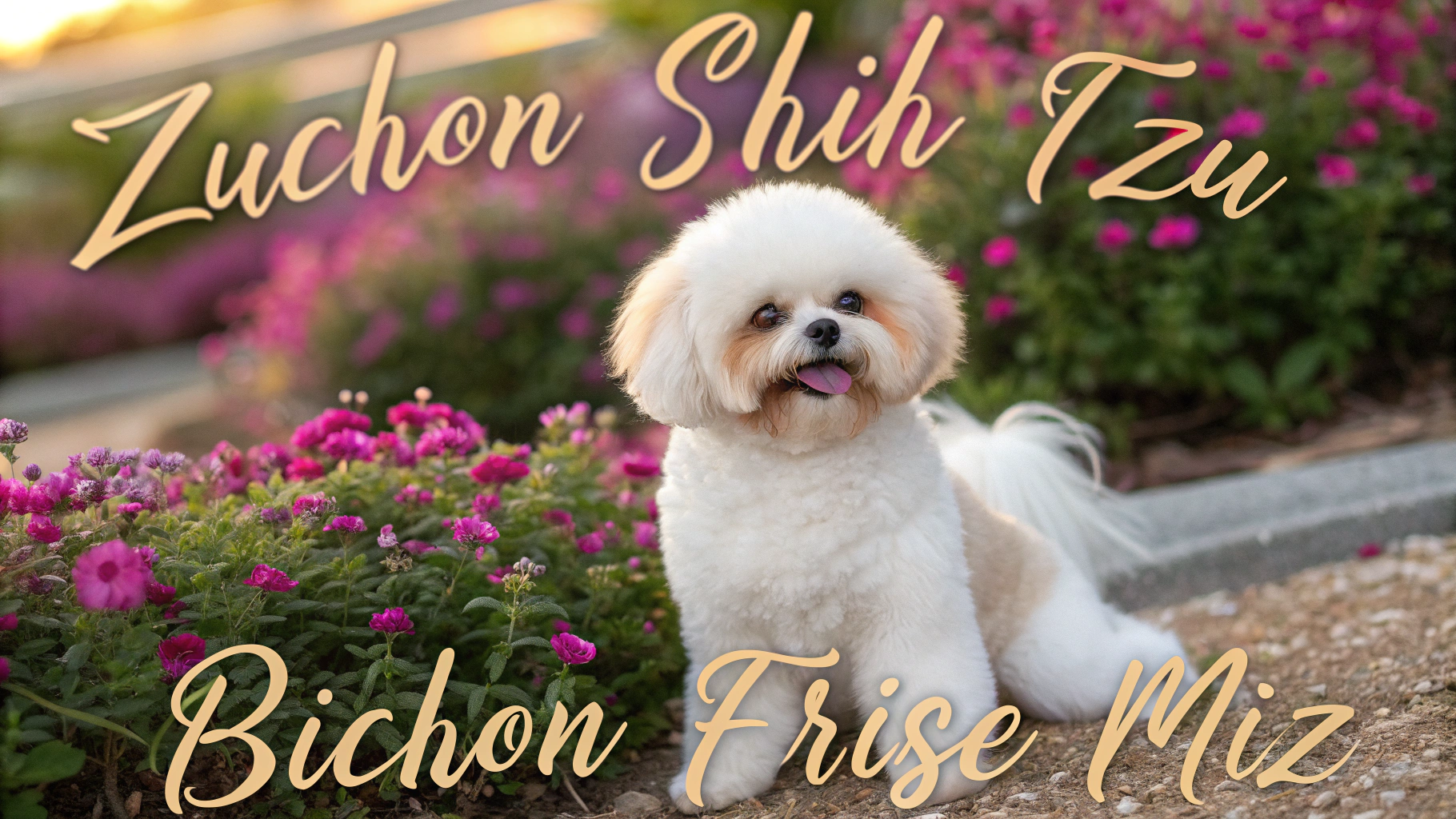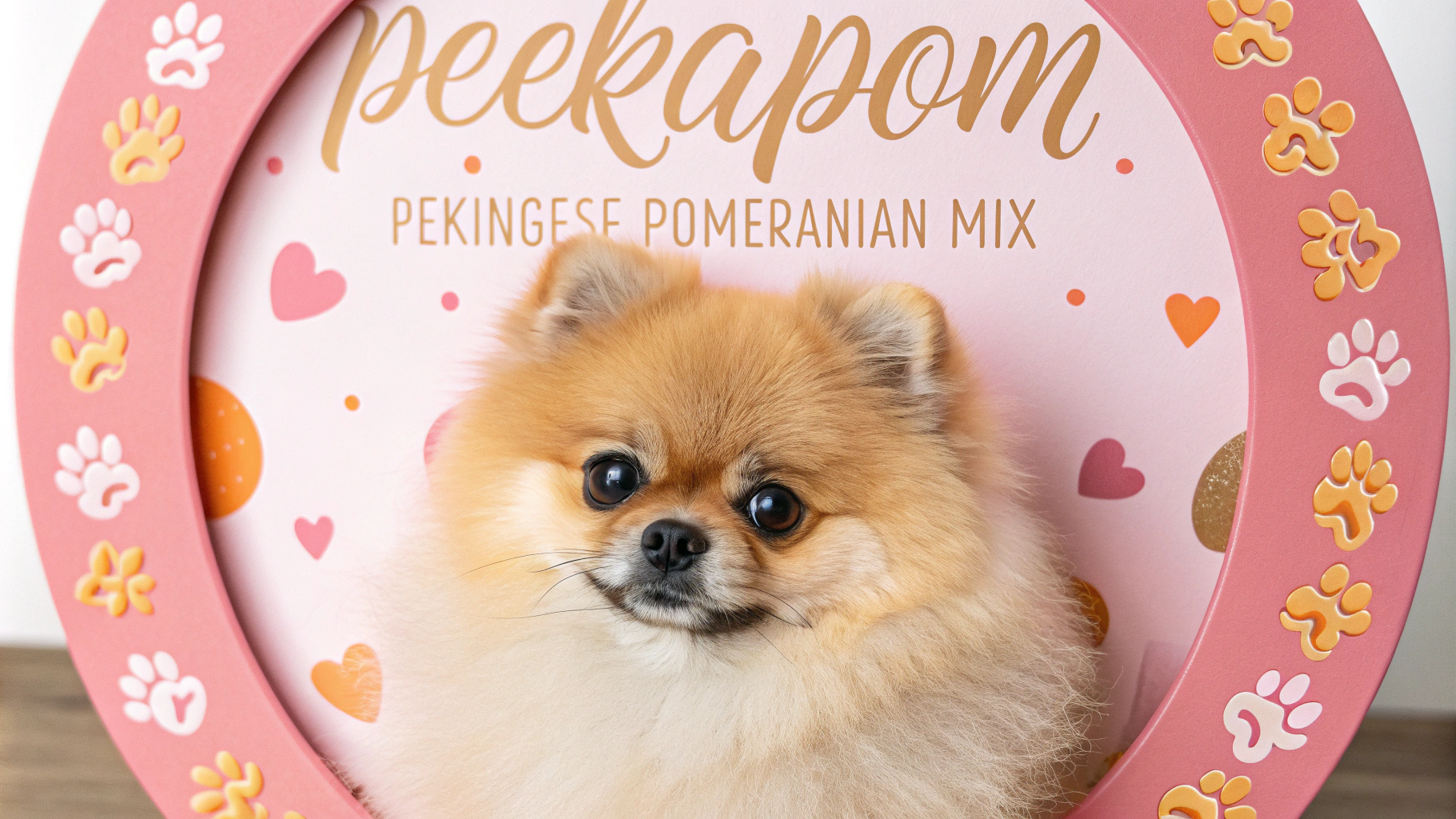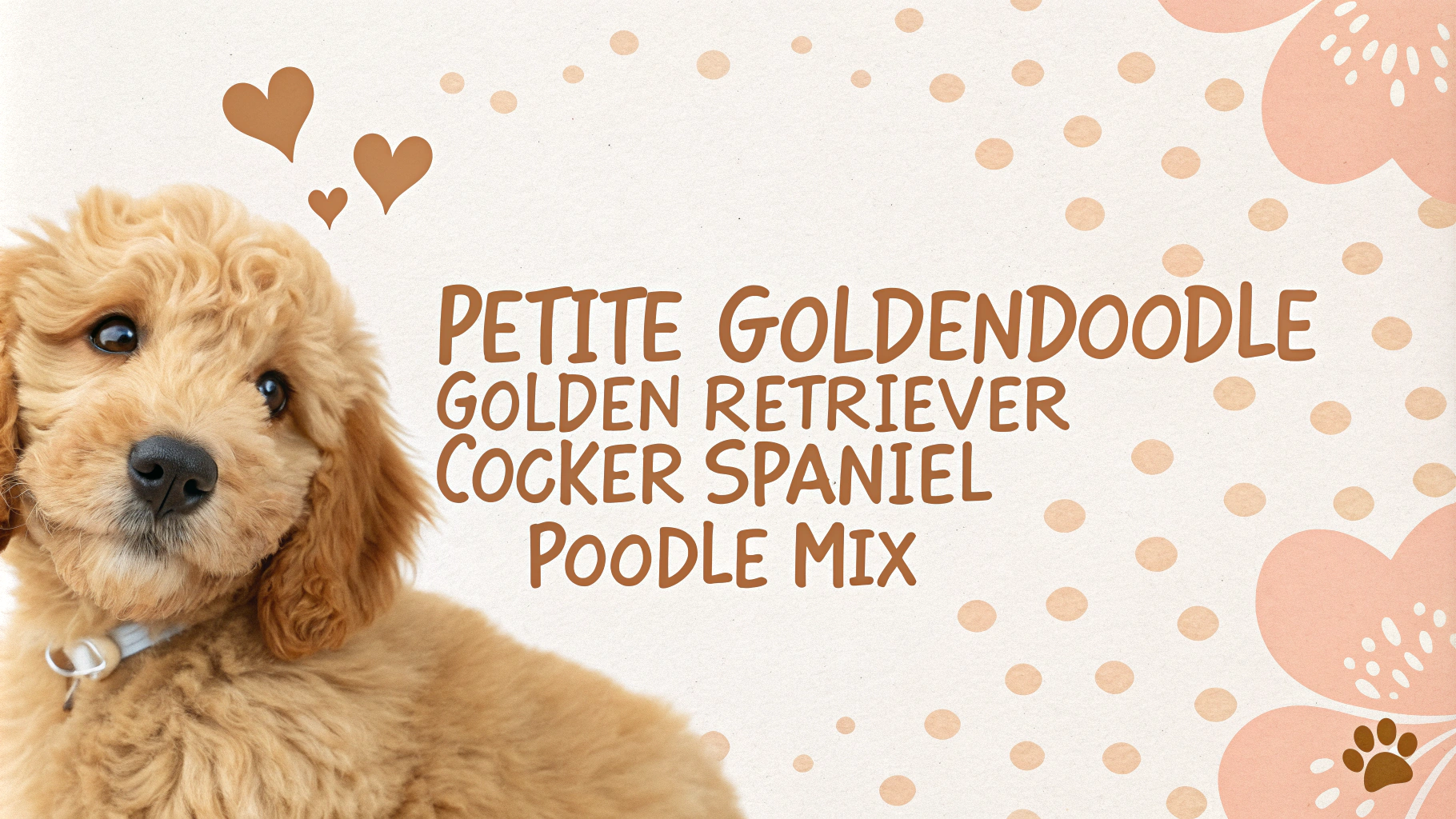The Miniature Aussiedoodle is a designer dog breed that combines the intelligence and loyalty of the Australian Shepherd with the hypoallergenic coat and playful nature of the Miniature Poodle. This mixed breed is known for its compact size, making it suitable for various living situations. Miniature Aussiedoodles are energetic, affectionate, and highly trainable, making them excellent companions for active individuals and families.
Key Facts
- Size: Small to medium, typically 12-20 inches tall
- Weight: 15-35 pounds
- Lifespan: 10-13 years
- Coat: Wavy to curly, often low-shedding
- Colors: Various, including black, blue merle, red merle, and parti-color
- Temperament: Intelligent, energetic, and affectionate
- Exercise needs: Moderate to high
- Grooming: Regular brushing and occasional professional grooming
Character Traits
Miniature Aussiedoodles are known for their intelligent and eager-to-please nature, inherited from both parent breeds. They are typically highly trainable and excel in various activities, including obedience, agility, and therapy work. These dogs are often energetic and playful, requiring regular exercise and mental stimulation to stay happy and healthy. Miniature Aussiedoodles are generally affectionate with their families and can be good with children when properly socialized. They may inherit the Australian Shepherd’s herding instinct, which can manifest as a tendency to nip at heels or chase moving objects. Their alert nature makes them good watchdogs, but they are usually not aggressive. Socialization from an early age is important to ensure they develop into well-rounded adults.
History & Origins
The Miniature Aussiedoodle is a relatively new designer dog breed, likely originating in the United States within the last few decades. This mix was created to combine the desirable traits of the Australian Shepherd and the Miniature Poodle. The Australian Shepherd, despite its name, was developed in the United States as a herding dog, known for its intelligence and work ethic. The Miniature Poodle, a smaller version of the Standard Poodle, has a long history as a water retriever and later as a companion dog, prized for its intelligence and low-shedding coat. Breeders aimed to create a smaller, more apartment-friendly version of the popular Aussiedoodle (Standard Poodle and Australian Shepherd mix) by using the Miniature Poodle. The exact date of the first intentional Miniature Aussiedoodle breeding is not well-documented, but the breed has gained popularity in recent years as a companion dog that combines the best traits of both parent breeds.
Health Concerns
Miniature Aussiedoodles generally inherit good health from their parent breeds, but they can still be prone to certain conditions. Common health issues may include:
- Hip dysplasia
- Progressive retinal atrophy (PRA)
- Epilepsy
- Allergies
- Bloat
Regular veterinary check-ups, proper nutrition, and maintaining a healthy weight are crucial for preventing and managing these potential health concerns. It’s also important to obtain your Miniature Aussiedoodle from a reputable breeder who conducts health screenings on parent dogs.
Exercise Needs
Miniature Aussiedoodles are energetic and intelligent dogs that require regular exercise and mental stimulation. They typically need:
- 60-90 minutes of daily exercise
- A mix of physical activities and mental challenges
- Opportunities for off-leash play in secure areas
Activities such as brisk walks, jogging, fetch, agility training, and interactive puzzle toys can help meet their exercise needs. Without adequate physical and mental stimulation, Miniature Aussiedoodles may develop destructive behaviors or become anxious. Regular exercise also helps maintain their overall health and prevents obesity.
Space Requirements
Despite their smaller size, Miniature Aussiedoodles are active dogs that benefit from having sufficient space to move and play. They can adapt to various living situations, including:
- Houses with fenced yards
- Apartments or condos (with adequate exercise)
- Urban or rural environments
While they can live comfortably in apartments, they thrive in homes with access to outdoor spaces. A securely fenced yard provides an ideal area for them to explore and play safely. Regardless of living space, regular outings and exercise are essential to keep them happy and healthy.
Nutrition & Feeding
Proper nutrition is crucial for maintaining the health and well-being of Miniature Aussiedoodles. Key considerations for their diet include:
- High-quality, age-appropriate dog food
- Balanced mix of proteins, carbohydrates, and fats
- Portion control to prevent obesity
- Fresh water available at all times
The amount of food should be adjusted based on the dog’s age, weight, activity level, and overall health. Avoid overfeeding, as Miniature Aussiedoodles can be prone to weight gain. Consult with a veterinarian to determine the best feeding schedule and portion sizes for your individual dog. Some owners opt for a combination of dry kibble and wet food, while others may choose to prepare homemade meals under veterinary guidance.
Grooming Tips
Miniature Aussiedoodles typically require regular grooming to maintain their coat and overall health. Their coat can vary from wavy to curly, depending on which parent they take after more. Brushing should be done 2-3 times a week, or daily if the coat is more Poodle-like, to prevent matting and tangling. Professional grooming every 6-8 weeks is recommended to keep the coat manageable and neat.
Regular bathing every 4-6 weeks (or as needed) helps keep their skin and coat clean and healthy. Pay special attention to cleaning their ears, as floppy ears can be prone to infections. Trim their nails every 2-3 weeks, or as needed, and brush their teeth several times a week to maintain good oral hygiene. It’s important to start grooming routines early to help your Aussiedoodle become comfortable with the process.
Consider the following grooming tools:
- Slicker brush for detangling
- Steel comb for removing mats
- Nail clippers or grinder
- Dog-specific toothbrush and toothpaste
- High-quality dog shampoo
Training Approach
Miniature Aussiedoodles are intelligent and eager to please, making them relatively easy to train. They inherit the Australian Shepherd’s working drive and the Poodle’s intelligence, resulting in a highly trainable mix. Positive reinforcement techniques work best with this breed, as they respond well to praise, treats, and play rewards.
Early socialization is crucial to ensure they grow into well-rounded adults. Expose them to various people, animals, and environments from a young age. Consistency is key in training, and setting clear boundaries will help them understand what’s expected of them. Due to their high energy and intelligence, they excel in activities such as:
- Obedience training
- Agility courses
- Trick training
- Nose work
Mental stimulation is as important as physical exercise for this breed. Incorporate puzzle toys and training games into their routine to keep their minds engaged. Be patient and persistent in training, as some individuals may inherit the Australian Shepherd’s independent streak. With proper training and socialization, Miniature Aussiedoodles can become well-behaved, versatile companions suitable for various lifestyles.
